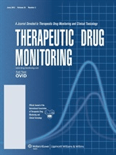
THERAPEUTIC DRUG MONITORING
Scope & Guideline
Driving Excellence in Personalized Pharmaceutical Care
Introduction
Aims and Scopes
- Population Pharmacokinetics:
This area emphasizes the study of drug concentration variability among different populations, utilizing modeling techniques to optimize dosing strategies across diverse patient demographics. - Therapeutic Drug Monitoring Techniques:
The journal highlights advanced methodologies in drug monitoring, including liquid chromatography-tandem mass spectrometry (LC-MS/MS) and microsampling techniques, which facilitate accurate drug level assessment in clinical settings. - Clinical Applications and Case Studies:
TDM publishes case studies that illustrate the practical implications of drug monitoring, showcasing how tailored therapeutic approaches can improve patient outcomes, particularly in critical care and specialized populations. - Pharmacogenomics and Personalized Medicine:
The integration of pharmacogenomic data into drug monitoring practices is a focus area, as it allows for personalized dosing regimens that account for individual genetic variability affecting drug metabolism. - Drug-Drug Interactions and Safety Assessments:
The journal addresses the complexities of drug interactions and their potential impacts on therapeutic efficacy and safety, guiding clinicians in managing polypharmacy effectively.
Trending and Emerging
- Model-Informed Precision Dosing:
There is an increasing emphasis on model-informed approaches to dosing, utilizing pharmacokinetic models to tailor drug regimens for individual patients, particularly in complex cases such as renal impairment or obesity. - Integration of Artificial Intelligence and Machine Learning:
The application of AI and machine learning techniques to enhance drug monitoring practices is emerging, providing innovative solutions for predicting drug levels and optimizing therapeutic outcomes. - Focus on Pediatric and Geriatric Populations:
An uptick in research specifically addressing therapeutic drug monitoring in pediatric and geriatric populations is evident, as these groups often exhibit unique pharmacokinetic profiles and require specialized dosing strategies. - Use of Alternative Sample Matrices:
Research on alternative sample matrices, such as dried blood spots and saliva, is gaining traction, offering more convenient and less invasive options for therapeutic drug monitoring. - Pharmacogenetic Applications in Clinical Practice:
There is a growing trend towards integrating pharmacogenetic testing into therapeutic drug monitoring, allowing for more personalized treatment plans based on individual genetic profiles.
Declining or Waning
- Traditional Monitoring Approaches:
There is a noticeable decline in research focusing solely on traditional trough concentration monitoring, as newer methodologies such as area under the curve (AUC) estimation gain traction for their enhanced accuracy and clinical relevance. - General Population Studies:
The journal has seen a reduction in studies that broadly assess drug monitoring in general populations, with a shift towards more targeted research in specific patient groups or conditions, reflecting a move towards precision medicine. - Static Reference Ranges:
The use of static reference ranges for therapeutic drug levels is diminishing in favor of more dynamic and individualized approaches that consider patient-specific factors such as pharmacogenomics and real-time monitoring data. - Basic Pharmacokinetic Studies:
Research focused solely on basic pharmacokinetic parameters without clinical application or relevance to therapeutic outcomes is becoming less frequent, as the journal prioritizes studies that directly impact clinical practice.
Similar Journals

Clinical Pharmacology-Advances and Applications
Unlocking Innovations in Clinical PharmacologyClinical Pharmacology-Advances and Applications is a premier open access journal published by DOVE MEDICAL PRESS LTD, based in New Zealand. Since its establishment in 2009, the journal has been dedicated to advancing the field of pharmacology by disseminating innovative research and applications related to medication therapy and patient outcomes. With its notable impact factor and current ranking within the top percentile of pharmacology journals, it provides an invaluable platform for researchers, healthcare professionals, and students to share knowledge and foster collaboration. The journal's content spans a wide range of topics, ensuring coverage of both fundamental and emerging areas in medical pharmacology. As of 2023, it holds a strong position in the Q2 quartile, underscoring its relevance and influence within the scientific community. Authors and readers alike benefit from its open access model, which ensures that critical findings are widely accessible, thereby enhancing the pace of discovery and application in clinical settings.

ACTA POLONIAE PHARMACEUTICA
Innovating Drug Development Through Peer-reviewed ResearchACTA POLONIAE PHARMACEUTICA is a well-established peer-reviewed journal published by Polskie Towarzystwo Farmaceutyczne, dedicated to the field of pharmaceutical sciences and pharmacology. With a rich history dating back to 1951, this journal serves as a vital platform for disseminating cutting-edge research and developments in pharmaceutical technology, drug development, and therapeutic therapies. Although it currently operates under a subscription model, its commitment to scientific rigor has earned it a respectable impact factor, placing it in the Q3 and Q4 quartiles respectively for Pharmaceutical Science and Pharmacology as of 2023. Researchers and practitioners alike will find value in its comprehensive coverage of essential topics, as well as its diverse range of contributions from both established and emerging scholars in the field. With its address located in the heart of Warsaw, Poland, ACTA POLONIAE PHARMACEUTICA aims to further bridge the gap between academia and industry, paving the way for innovation in drug discovery and therapeutic applications.
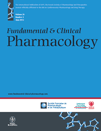
FUNDAMENTAL & CLINICAL PHARMACOLOGY
Advancing pharmacological knowledge for better health outcomes.FUNDAMENTAL & CLINICAL PHARMACOLOGY is a distinguished journal dedicated to advancing the fields of pharmacology and clinical medicine. Published by WILEY, this journal serves as a pivotal platform for researchers, healthcare professionals, and students alike to disseminate innovative research findings and clinical applications. With an impressive history spanning from 1987 to 2024, it has consistently maintained its relevance in the scientific community, evidenced by its Q2 quartile ranking in both Pharmacology and Pharmacology (medical) categories for 2023. The journal's diverse publication range, which includes original research articles, reviews, and clinical studies, helps bridge the gap between fundamental research and practical application in healthcare settings. Although it does not offer open access, its rigorous peer-review process ensures that published content meets the highest scholarly standards, making it a vital resource for those aiming to stay at the forefront of pharmacological sciences.
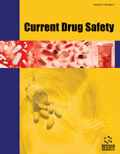
Current Drug Safety
Illuminating the Path to Safer TherapeuticsCurrent Drug Safety is a distinguished peer-reviewed journal published by Bentham Science Publishers, focusing on the critical intersection of pharmacology and toxicology. With an ISSN of 1574-8863 and an E-ISSN of 2212-3911, this journal serves as a platform for the latest research and advances in drug safety, highlighting the importance of pharmacological assessments and toxicity evaluations in therapeutic development and public health. Reaching a broad international audience from its base in the United Arab Emirates, Current Drug Safety offers an invaluable resource for researchers, professionals, and students interested in the dynamic fields of drug research and safety management. Despite a current Q3 categorization in multiple pharmacology and toxicology quartiles for 2023, the journal continues to strive for excellence in the scholarly community, reflecting its commitment to disseminating high-quality research. While not operating under an open access model, articles can be accessed through institutional subscriptions and other platforms, ensuring valuable insights into drug safety are available to those who need it most.
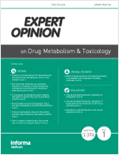
Expert Opinion on Drug Metabolism & Toxicology
Exploring the Intersection of Drug Development and SafetyExpert Opinion on Drug Metabolism & Toxicology, published by Taylor & Francis Ltd, is a leading journal in the fields of pharmacology and toxicology, with a distinguished reputation gleaned from its Q1 rankings in both disciplines as of 2023. With an ISSN of 1742-5255 and an E-ISSN of 1744-7607, this journal aims to foster innovative discussions and critical insights into the metabolism and toxicological assessment of drugs, appealing to a wide audience of researchers, professionals, and students. The journal's commitment to maintaining high academic standards is reflected in its placement within the top quartiles of the Scopus rankings—ranked 17th in Toxicology and 73rd in Pharmacology—demonstrating its significant impact and relevance in advancing knowledge within the drug development sector. Published since 2005 and converging into 2024, it provides a platform for timely dissemination of expert opinions, systematic reviews, and original research, reinforcing its vital role in shaping the future of pharmacological sciences in an ever-evolving landscape.

JOURNAL OF VETERINARY PHARMACOLOGY AND THERAPEUTICS
Fostering Knowledge in Veterinary Pharmacology and TherapeuticsJOURNAL OF VETERINARY PHARMACOLOGY AND THERAPEUTICS is a crucial publication in the field of veterinary medicine, dedicated to advancing knowledge and practices related to pharmacology and therapeutic interventions in animals. Published by WILEY, this peer-reviewed journal has been a reliable source of innovative research since its inception in 1978, and it continues to play an integral role in shaping veterinary pharmacology through its commitment to high-quality scientific discourse. With an impact factor reflective of its robust academic standing, the journal is categorized in the Q3 quartile for Pharmacology and Q2 for Veterinary (miscellaneous) as of 2023, highlighting its relevance and significance within these domains. It is indexed in Scopus with commendable rankings, particularly in General Veterinary, where it ranks #45 out of 194, placing it in the 77th percentile. This journal not only offers a platform for original research articles but also caters to the dissemination of practical applications and reviews that are essential for veterinarians, researchers, and students alike in enhancing animal health and welfare. Although not an open-access publication, its contributions remain accessible to those engaged in the veterinary sciences through institutional subscriptions. The journal's enduring legacy and forward-looking approach make it a vital resource for anyone interested in veterinary therapeutics and pharmacology.

Advances in Pharmacological and Pharmaceutical Sciences
Pioneering Insights in Toxicology and Drug Development.Advances in Pharmacological and Pharmaceutical Sciences is a premier open-access journal published by Hindawi Ltd. based in the United Kingdom. Established in 2020, the journal swiftly garnered attention for its commitment to disseminating high-quality research in the realms of pharmacology, toxicology, and pharmaceutical sciences. It holds a commendable impact with notable quartile rankings, including Q2 in both Organic Chemistry and Pharmacology, indicating its importance within these disciplines. By embracing an open-access model, the journal ensures that research findings are widely available, promoting increased visibility and collaboration among researchers, professionals, and students globally. With an ongoing convergence of insights projected through 2024, Advances in Pharmacological and Pharmaceutical Sciences aims to address critical issues and advancements in drug development and therapeutic practices, making it an invaluable resource for those at the forefront of scientific inquiry in pharmacology and related fields.

CLINICAL PHARMACOKINETICS
Illuminating Pathways in Clinical PharmacologyCLINICAL PHARMACOKINETICS, published by ADIS INT LTD, is a premier journal dedicated to the field of pharmacology, with a distinguished reputation since its inception in 1976. With an impressive impact factor and categorized in the Q1 quartile for both general pharmacology and medical pharmacology, this journal ranks #29 out of 272 and #53 out of 313 in its respective categories in Scopus, highlighting its high academic influence and the quality of research it publishes. CLINICAL PHARMACOKINETICS serves as a vital resource for researchers, professionals, and students interested in the latest advancements in drug metabolism, therapeutic efficacy, and clinical applications of pharmacokinetic studies. As it continues to evolve through 2024 and beyond, the journal remains committed to fostering a deeper understanding of pharmacotherapy and its implications in clinical practice. While it does not currently offer open access, the journal ensures that cutting-edge research is accessible through various academic platforms.
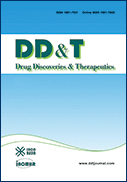
Drug Discoveries and Therapeutics
Fueling the quest for effective medical solutions.Drug Discoveries and Therapeutics is a highly regarded journal devoted to the advancement of knowledge in the field of medicine and pharmacology. Published by the International Research & Cooperation Association for Biological & Socio-Sciences Advancement in Tokyo, Japan, this journal serves as a vital resource for researchers, practitioners, and students interested in the latest developments in drug discovery and therapeutic strategies. With a Scopus ranking of #192 out of 826 in the General Medicine category, and positioning itself in the 76th percentile, it demonstrates a significant impact within the scientific community. The journal publishes original research articles, reviews, and innovative studies that address the complexities of drug development, therapeutic efficacy, and clinical applications. Researchers and clinicians can access valuable insights to enhance their practices and inform further studies as it continues to disseminate crucial findings essential for the advancement of medical science.
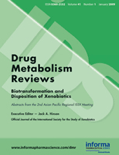
DRUG METABOLISM REVIEWS
Advancing knowledge in pharmacology and toxicology.Drug Metabolism Reviews is a premier journal dedicated to the dissemination of scientific research and reviews in the field of pharmacology, toxicology, and pharmaceutics, published by Taylor & Francis Ltd. With its inception dating back to 1972, this journal has consistently provided an authoritative platform for scholars and professionals from diverse disciplines to explore the intricate mechanisms of drug metabolism and their implications for therapeutic applications. The journal enjoys commendable rankings, placing in the Q2 quartile for Pharmacology (medical) and the Q1 quartile in the miscellaneous subfield, signaling its significant impact within the community. Notably, it is recognized within the top 96th percentile in General Pharmacology, Toxicology and Pharmaceutics, affirming its esteemed position among academic publications. Although it operates under a subscription model, Drug Metabolism Reviews remains an essential resource for researchers, professionals, and students seeking to deepen their understanding of drug interactions, safety, and efficacy. The insights shared within its pages contribute vital knowledge to the global discourse on drug development and personalized medicine.